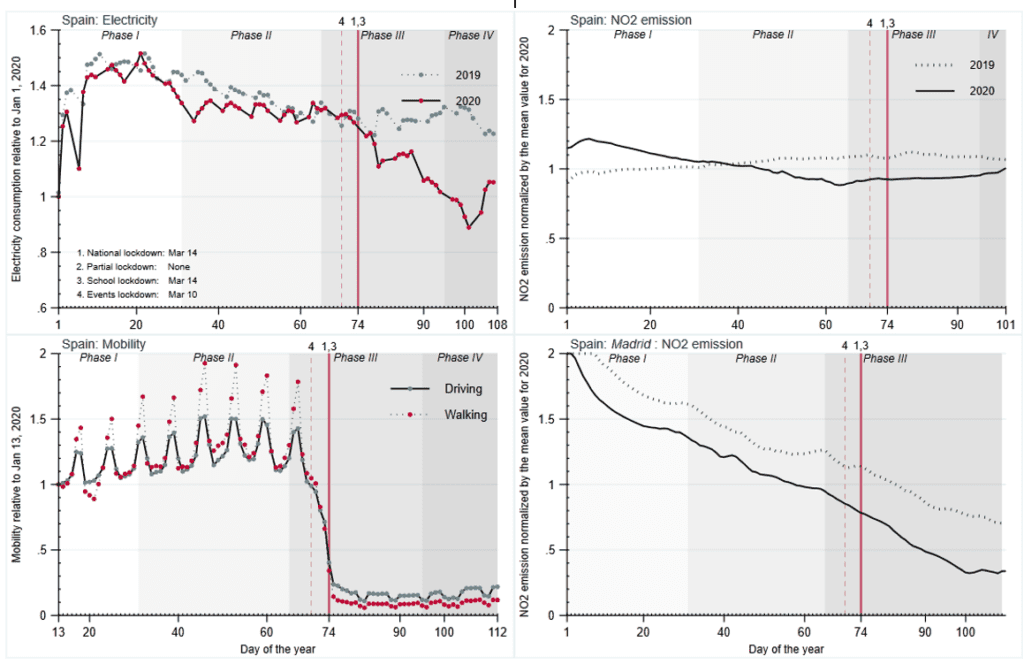As the US is bracing for what seems to be a worst-case coronavirus scenario, a trio of world bank economists report that early lockdowns are the best way to protect the economy against the pandemic.

The coronavirus pandemic has taken a huge toll in terms of human lives, health, and the economy. But while much has been written about the theory of pandemic economics, not that much has been discussed about the practical situation — because many official economic indicators haven’t yet been published. This is why this analysis comes in handy.
Many politicians have used the economy as a justification for not implementing interventions such as lockdowns or stay-at-home orders. But the idea that lockdowns end up damaging the economy (more than it would be damaged without a lockdown) is far from proven.
Take the 1918 Spanish Flu, pandemic. Non-pharmaceutical interventions such as lockdowns did not depress the economy. Pandemics depress the economy, public health interventions do not, the authors of a 2020 study write.
It is very likely that the same thing is happening with the COVID-19 pandemic. Clearly, the pandemic will be a hammer on global economy, with severe and long-lasting consequences. But there’s little proof to suggest that lockdowns will accentuate this economic damage.
In fact, the opposite might be true.
In a new study, three World Bank economists estimate the economic impact of the pandemic by tracking proxies of economic activities (such as electricity consumption, NO2 emissions, and personal mobility) across much of Europe and Asia. Here is an example:

Overall, the researchers find that lockdowns led to a decline of about 10% in economic activity across the studied areas; on average, the countries that implemented lockdowns earliest had better short-term economic recoveries and lower cumulative mortality.
“Countries that implemented a lockdown at earlier stages of the pandemic have seen lower overall drops in electricity consumption and so far, also lower mortality rates. Hence, the combined human and economic costs seem to have been lower for countries that acted faster. Further, we show in the paper that countries that acted faster were also able to control the pandemic with less strict interventions,” the authors write.
The economic problem with social distancing measures is that they reduce both supply and demand: supply by forcing workers to stay home (or work less), and demand by negatively affecting the consumption of services (particularly those that involve interpersonal contact). The pandemic also affects labor supply by reducing the number of people capable or willing to work, and generates fears and uncertainties.
It’s been argued that these interventions, while useful to “flatten the curve”, may come at high economic costs. But researchers found that the spread of the disease itself comes at an economic impact of approximately 11%. Therefore, if the lockdown is useful in keeping the disease under control, it can actually have a positive economic impact. So the whole discussion then becomes a matter of when the lockdown intervention is implemented.
Even a few days can make a big difference. Countries that implemented a lockdown one week before the first fatality reported an economic decrease that was 2% smaller than a country that implemented a lockdown on the same day of the first fatality. Overall, the authors associate a 0.3% decrease in activity for each day of delay.
“In this sense, our results suggest that the sooner non-pharmaceutical interventions are implemented, the better are both the economic and the health outcomes of a country, the authors write”.
The authors also suggest caution when reopening the economy. The drop in economic activity is not only caused by the lockdown itself, but also by the behavioral response to the spread of the disease.
“A fast reopening that generates a rebound in the spread of the disease can be damaging not only in human terms but also in economic ones. An unexpected increase in the infection rates or the number of deaths after opening up might slow down or even reverse positive economic trends.”


